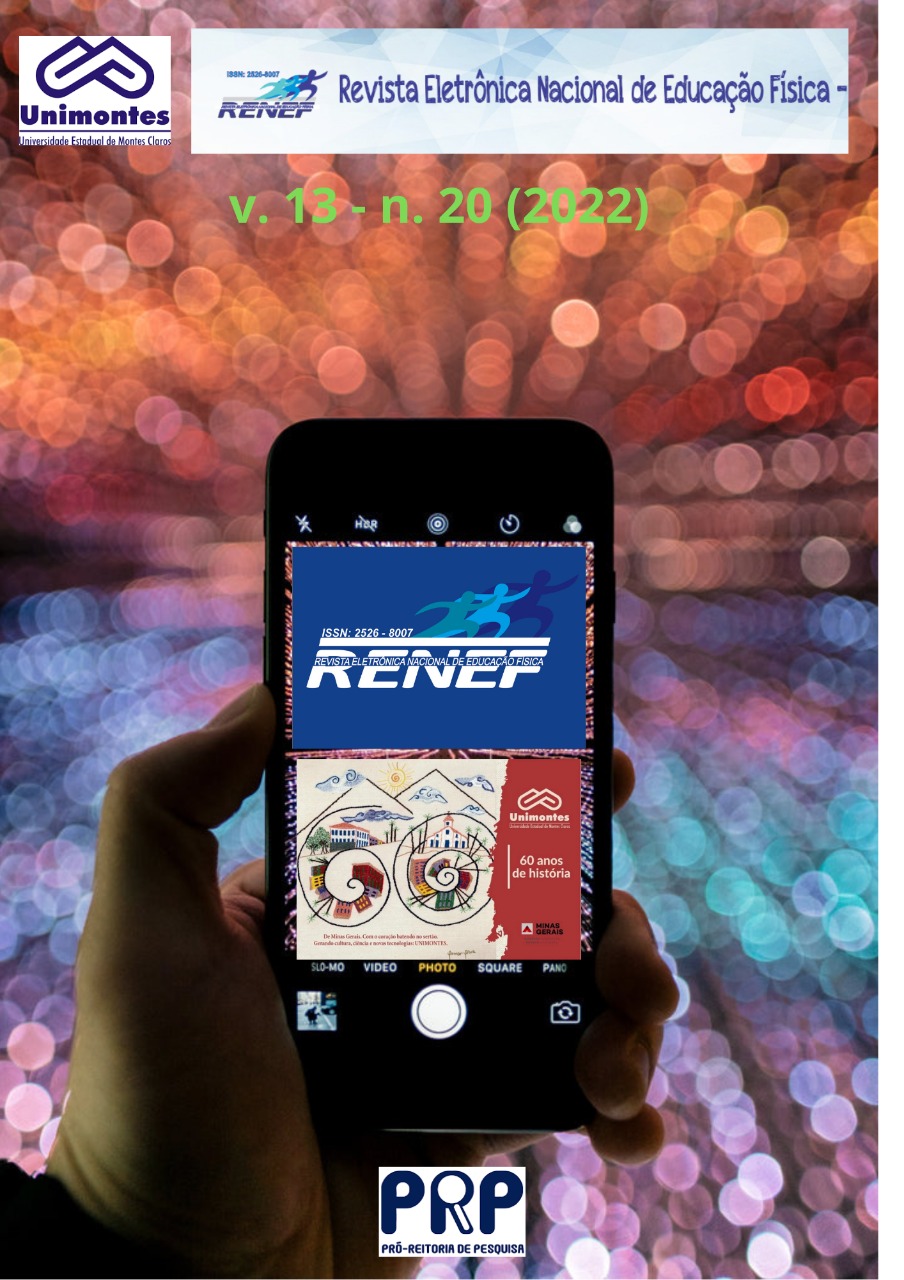ANALYSIS OF THE EFFECT OF RESISTANT EXERCISE ON IGF2 EXPRESSION IN C57BL/6 MICE WITH CACHEXIA ASSOCIATED WITH CANCER
DOI:
10.46551/rn2022132000062Keywords:
Cutaneous melanoma, Cachexia, Weathered ExerciseAbstract
Introduction: Cutaneous melanoma is a tumor of neuroectodermal origin, covering the entire epidermis. The referred tumor has a high incidence and high mortality rate, therefore it is considered a very important skin cancer in medical investigation. Objective: To verify the effects of resistance exercise on IGF-2 expression in C57BL/6 mice with cachexia associated with the syngeneic tumor model of cutaneous melanoma. Methods: Experimental, analytical, prospective and quantitative approach. Twelve female C57BL/6 mice were used, inoculated with B16-F10 cells of the cutaneous melanoma lineage. Twelve female C57BL/6J mice were used, where they were randomly distributed into 3 groups. The first group was the control (n=4), which had not participated in any type of intervention, the second group being the control group with tumor induction (TUMOR) (n=4), which did not undergo any type of intervention and was induced to cancer-associated cachexia, the third group (TRTUMOR) (n=4) was climbing training, performing resistance exercise with shock stimulation and also being induced cancer-associated cachexia. Results: The inferential analysis of the study showed no significant difference. Effect size was rated as large (1.59) for the CONTROL vs TUMOR group; very large (2.43) CONTROL vs TRTUMOR and moderate (0.67) TUMOR vs TRTUMOR. Conclusion: The results show that there was a non-significant increase in the IGF-2 protein, however, there was expression of the protein in rats that practiced physical activity.
Downloads
References
Argilés JM, Alvarez B, López‐Soriano FJ. The metabolic basis of cancer cachexia. Medicinal research reviews, (1997);17(5): 477-498. Doi: https://doi.org/10.1002/(SICI)1098-1128(199709)17:5%3C477::AID-MED3%3E3.0.CO;2-R
Atherson, P.J.; Barbra, J.; Smith, J.; Singh, M.; Renne, J.; Wackerhage, H. Selective activation of AMPK-PGG-lalpha or PKB-TSC2-mTOR signaling can explain adaptive responses to endurance or resistance training-like electrical muscle stimulation. FASEB Journal. Vol. 19. 2005.p.786-88.
Bergman D, Halje M, Nordin M, Engström W. Insulin-like growth factor 2 in development and disease: a mini-review. Gerontology (2013);59(3): 240-249. Doi: https://doi.org/10.1159/000343995
Berkelhammer, J., Oxenhandler, R. W., Hook, R. R., & Hennessy, J. M. (1982). Development of a new melanoma model in C57BL/6 mice. Cancer research, 42(8), 3157-3163. Disponivel: https://cancerres.aacrjournals.org/content/42/8/3157.article-info
Cruz, F.F.; Boff, L.V.; Silva, J.Z.; Cornely, F. Relação do exercício físico com o hormônio do crescimento. EFDeportes.com, Revista Digital.15. Num.151.2010. Disponível: https://www.efdeportes.com/efd151/exercicio-fisico-com-o-hormonio-do-crescimento.htm. Acesso em: 22 mar. 2022
Cruzat VF, Donato Júnior J, Tirapegui J, Schneider CD. Hormônio do crescimento e exercício físico: considerações atuais. Revista brasileira de ciências farmacêuticas, (2008);44(4): 549-562. Disponivel: https://www.scielo.br/j/rbcf/a/sHkXqpGZtspzKGy9YwY3wDF/?lang=pt&format=pdf
Da Silva MPN. Síndrome da anorexia-caquexia em portadores de câncer. Revista brasileira de cancerologia, (2006);52(1):59-77. Doi: https://doi.org/10.32635/21769745.RBC.2006v52n1.1910
Dewys WD, Begg C, Lavin PT, Band PR, Bennett JM, Bertino JR, Tormey DC. Prognostic effect of weight loss prior tochemotherapy in cancer patients. The American journal of medicine, (1980);69(4): 491-497. Doi: https://doi.org/10.1016/S0149-2918(05)80001-3
Dos Santos KL, De Oliveira TR, Lopes JVN, Freitas AS, Vieira MM, de Oliveira Sousa BV, Rodrigues VD. Efeito da atividade física em ambiente enriquecido sobre o músculo esquelético de camundongos com caquexia associado ao melanoma cutâneo. Revista Pesquisa em Fisioterapia, (2020);10(3): 436-441. Doi: https://doi.org/10.17267/2238-2704rpf.v10i3.3016
Erbay E, Park IH, Nuzzi PD, Schoenherr CJ, Chen J. IGF-II transcription in skeletal myogenesis is controlled by mTOR and nutrients. The Journal of cell biology, (2003);163(5): 931-936. Doi: https://doi.org/10.1083/jcb.200307158
George J, Cannon T, Lai V, Richey L, Zanation A, Neil Hayes D, Couch M. Cancer cachexia syndrome in head and neck cancer patients: Part II. Pathophysiology. Head & Neck: Journal for the Sciences and Specialties of the Head and Neck, (2007);29(5): 497-507. Doi: https://doi.org/10.1002/hed.20630
Gould DW, Lahart I, Carmichael AR, Koutedakis Y, Metsios GS. Cancer cachexia prevention via physical exercise: molecular mechanisms. Journal of cachexia, sarcopenia and muscle, (2013);4(2): 111-124. Doi: 10.1007/s13539-012-0096-0
Hopkins W, Marshall S, Batterham A, Hanin J. Progressive statistics for studies in sports medicine and exercise science. Medicine+ Science in Sports+ Exercise, (2009);41(1): 3. DOI: 10.1249/MSS.0b013e31818cb278
Livak KJ, Schmittgen TD. Analysis of relative gene expression data using real-time quantitative PCR and the 2− ΔΔCT method. Methods, (2001);25(4): 402-408. Doi: https://doi.org/10.1006/meth.2001.1262
Martinelli Júnior CE, Oliveira CR, Brito AVDO, Costa FO, Silva PR, Serpa MG, Aguiar-Oliveira MH. Diagnóstico da Deficiência de Hormônio de Crescimento, a Rigor de IGF-1. Arquivos Brasileiros de Endocrinologia & Metabologia, (2002);46: 27-33. Doi: https://doi.org/10.1590/S0004-27302002000100005
Naser, N. Melanoma cutâneo: estudo epidemiológico de 30 anos em cidade do sul do Brasil, de 1980-2009. Anais Brasileiros de Dermatologia, (2011); 86:932-941. Disponível: https://www.scielo.br/j/abd/a/GsJdsQPZzzrTJ96BnCMdqQm/?format=pdf&lang=pt
Pisa MF. Estudo dos possíveis efeitos do treinamento físico ao longo de uma temporada de treinamento sobre o eixo GH/IGF-I, proteínas de ligação dos IGFs em atletas de voleibol (Doctoral dissertation, Universidade de São Paulo). 2017. Doi: 10.11606/D.109.2018.tde-04072018-092521
Rodrigues, V.D.R. Efeitos do treinamento resistido na progressão tumoral e na ocorrência de caquexia associada ao modelo tumoral singênico murinho de melanoma cutâneo em camundongos C57BL/6. 2018. 108f. Tese de Doutorado. Universidade Estadual de Montes Claros. Montes Claros, 2018.
Silva E, Santos E, Júnior E. Terapia fotodinâmica no tratamento do câncer de pele: conceitos, utilizações e limitações. Rev Bras Farm, (2009);90(3): 211-7. Doi: http://dx.doi.org/10.33448/rsd-v10i1.11257
Tisdale MJ. Biology of cachexia. Journal of the National Cancer Institute, (1997);89(23): 1763-1773. Doi: https://doi.org/10.1093/jnci/89.23.1763
Trunova GV, Makarova OV, Diatroptov ME, Bogdanova IM, Mikchailova LP, Abdulaeva SO. Morphofunctional characteristic of the immune system in BALB/c and C57BL/6 mice. Bulletin of experimental biology and medicine, (2011);151(1): 99-102. Doi: https://doi.org/10.1007/s10517-011-1268-1
Vanzella C. Efeitos do exercício físico sobre a memória e sobre parâmetros bioquímicos e moleculares no hipocampo e no músculo de ratos senescentes. Tese de Doutorado. Universidade Federal do Rio Grande do Sul. Porto Alegre. 2017. Disponível: https://www.lume.ufrgs.br/handle/10183/158166
Wainstein AJ, Belfort FA. Conduta para o melanoma cutâneo. Revista do Colégio Brasileiro de Cirurgiões, (2004);31(3):204-214. Doi: https://doi.org/10.1590/S0100-69912004000300011
Widrick, J.J.; Stelzer, J.E.; Shoepe, T.C.; Garneer, D P. Propriedades funcionais das fibras musculares humanas após treinamento de resistência a curto prazo. American Journal of Physiology- Regulatory, Integrative and Comparative Physiology. Vol. 2. 2002.p. R408-16.
Published
Versions
- 2022-10-05 (2)
- 2022-09-29 (1)


















